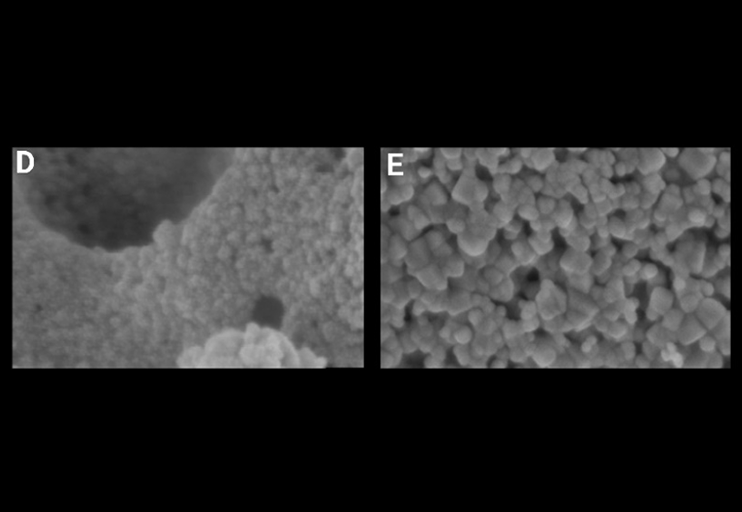Zinc oxide-silver nanoparticles synthesized with plant extracts against Alternaria solani
DOI:
https://doi.org/10.29312/remexca.v16i30.4040Keywords:
Antifungals, zinc nanoparticles, zinc-silver nanoparticlesAbstract
Pathogen control has traditionally been addressed through the use of synthetic fungicides, generating adverse effects on the environment and agricultural production systems. In contrast, plant extracts contain bioactive compounds that modulate the development of phytopathogens. In addition, their synergistic effect with nanoparticles offers a promising and sustainable strategy for their application in agriculture. The objective was to use plant extracts from Flourensia cernua, Larrea tridentata and Lippia graveolens to synthesize zinc and zinc-silver nanoparticles and evaluate their antifungal effect against Alternaria solani. The nanoparticles synthesized at 400 °C from each extract had particle sizes less than 30 nm and an irregular hemispherical morphology, which was confirmed by X-ray diffraction and scanning electron microscopy techniques. The best inhibition effect and the greatest reduction in spore production of the strains were observed with the nanoparticles generated using 1 000 mg L-1 of the L. graveolens extract, which inhibited 65% of growth and reduced spore production by 66% compared to the control. Adding silver to the nanoparticles significantly improved the ability to inhibit spore production, reaching 78% inhibition. These results suggested that zinc and zinc-silver nanoparticles, obtained from plant extracts, represent a promising alternative for the control of phytopathogenic fungi, and contribute to the reduction of the environmental impact associated with the excessive use of synthetic fungicides.
Downloads
References
Abdelhakim, H. K.; El‐Sayed, E. R. and Rashidi, F. B. 2025. Biosynthesis of zinc oxide nanoparticles with antimicrobial, anticancer, antioxidant and photocatalytic activities by the endophytic Alternaria tenuissima. Journal of Applied Microbiology. 128(6):1634-1646. https://dx.doi.org/10.1111/jam.14581.
Ahmad, H.; Venugopal, K.; Rajagopal, K.; Britto, S.; Nandini, B.; Pushpalatha, H. G.; Konappa, N.; Udayashankar, A. C.; Geetha, N. and Jogaiah, S. 2020. Green synthesis and characterization of zinc oxide nanoparticles using eucalyptus globules and their fungicidal ability against pathogenic fungi of apple orchards. Biomolecules. 10(3):425. https://doi.org/10.3390/biom10030425.
Ahmad, T.; Xing, F.; Cao, C. and Liu, Y. 2024. Characterization and toxicological potential of Alternaria alternata associated with post-harvest fruit rot of Prunus avium in China. Frontiers in Microbiology. 15:1273076. https://doi.org/10.3389/fmicb.2024.1273076.
Anwar, A.; Masri, A.; Rao, K.; Rajendran, K.; Khan, N. A.; Shah, M. R. and Siddiqui, R. 2019. Antimicrobial activities of green synthesized gums-stabilized nanoparticles loaded with flavonoids. Scientific Reports. 9(1):3122. https://doi.org/10.1038/s41598-019-39528-0.
Bustillo, P. A. E. 2010. Método para cuantificar suspensiones de esporas de hongos y otros organismos. Universidad Nacional de Colombia. https://doi.org/10.13140/RG.2.1.3594.5128.
Chandrasekaran, M. and Paramasivan, M. 2024. Plant growth-promoting bacterial (PGPB) mediated degradation of hazardous pesticides: a review. International Biodeterioration and Biodegradation. 190:105769. https://doi.org/10.1016/j.ibiod.2024.105769.
Chen, J.; Wu, L.; Song, K.; Zhu, Y. and Ding, W. 202). Nonphytotoxic copper oxide nanoparticles are powerful “nanoweapons” that trigger resistance in tobacco against the soil-borne fungal pathogen Phytophthora nicotianae. Journal of Integrative Agriculture. 21(11):3245-3262. https://doi.org/10.1016/j.jia.2022.08.086.
Georgekutty, R.; Seery, M. K. and Pillai, S. C. 2008. A highly efficient Ag-ZnO Photocatalyst: synthesis, properties, and mechanism. The Journal of Physical Chemistry C. 112(35):13563-13570. https://doi.org/10.1021/jp802729a.
Guilger-Casagrande, M. and Lima, R. 2019. Synthesis of silver nanoparticles mediated by fungi: a review. Frontiers in Bioengineering and Biotechnology. 7(287):1-16. Doi: 10.3389/fbioe.2019.00287.
Méndez-Andrade, R.; Vallejo-Pérez, M. R.; Loera-Alvarado, E.; Santos-Villarreal, G.; García-Cerda, L. A. and Vera-Reyes, I. 2022. Efficacy of biosynthesized silver nanoparticles from Larrea tridentata against Clavibacter michiganensis. Journal of Phytopathology. 170(2):91-99. https://doi.org/10.1111/jph.13058.
Meng, A.; Sun, S.; Li, Z. and Han, J. 2013. Synthesis, characterization, and dispersion behavior of ZnO/Ag nanocomposites. Advanced Powder Technology. 24(1):224-228. https://doi.org/10.1016/j.apt.2012.06.006.
Moradi, F.; Sedaghat, S.; Moradi, O. and Arab-Salmanabadi, S. 2021. Review on green nano-biosynthesis of silver nanoparticles and their biological activities: with an emphasis on medicinal plants. Inorganic and Nano-Metal Chemistry. 51(1):133-142. Doi:10.1080/24701556.2020.1769662.
Muñoz-Ordoñez, I. 2020. Síntesis de nanopartículas de óxido de zinc y óxido de zinc/plata asistida con extractos de Flourensia cernua DC: efecto antagónico contra Clavibacter michiganensis y en la germinación de semillas de tomate. 17-35 pp. https://ciqa.repositorioinstitucional.mx/jspui/bitstream/1025/625/1/idali%20mu%c3%91oz%20ordo%c3%91ez%20maestria%20en%20ciencias%20en%20agroplasticultura.pdf.
Nisar, P.; Ali, N.; Rahman, L.; Ali, M. and Shinwari, Z. K. 2019. Antimicrobial activities of biologically synthesized metal nanoparticles: an insight into the mechanism of action. JBIC Journal of Biological Inorganic Chemistry. 24(7):929-941. https://doi.org/10.1007/s00775-019-01717-7.
Orberá-Ratón, T. M.; Serrat-Díaz, M. J. and González-Giro, Z. 2009. Potencialidades de bacterias aerobias formadoras de endosporas para el biocontrol en plantas ornamentales. Fitosanidad. 13(2):95-100.
Rajwade, J. M.; Chikte, R. G. and Paknikar, K. M. 2020. Nanomaterials: new weapons in a crusade against phytopathogens. Applied Microbiology and Biotechnology. 104(4):1437-1461. https://doi.org/10.1007/s00253-019-10334-y.
Rosenberg, M.; Visnapuu, M.; Vija, H.; Kisand, V.; Kasemets, K.; Kahru, A. and Ivask, A. 2020. Selective antibiofilm properties and biocompatibility of nano-ZnO and nano-ZnO/Ag coated surfaces. Scientific Reports. 10:1-15. Doi: 10.1038/s41598-020-70169-w.
Shireen-Akhter, Q.; Sultana, Z.; Ud-Daula, M. A.; Ashikuzzaman, M. D.; Shamim, R.; Rahman, M. M.; Khaton, A.; Tang, M. A. K.; Rahman, M. S.; Hossain, M. F.; Lee, S. J. and Rahman, A. T. M. M. 2024. Optimization of green silver nanoparticles as nanofungicides for management of rice bakanae disease. Heliyon. 10:e27579. https://doi.org/10.1016/j.heliyon.2024.e27579.
Vera-Reyes, I.; Esparza-Arredondo, I. J. E.; Lira-Saldívar, R. H.; Granados-Echegoyen, C. A.; Álvarez-Román, R.; Vásquez-López, A.; Santos-Villarreal, G. and Díaz-Barriga, E. 2019. In vitro antimicrobial effect of metallic nanoparticles on phytopathogenic strains of crop plants. Journal of Phytopathology. 167(7-8):461-469. https://doi.org/10.1111/jph.12818.
Zhang, H.; Zheng, T.; Wang, Y., Li, T. and Chi, Q. 2024. Multifaceted impacts of nanoparticles on plant nutrient absorption and soil microbial communities. Frontiers in Plant Science. 15:1-15. Doi:10.3389/fpls.2024.1497006.

Published
How to Cite
Issue
Section
License
Copyright (c) 2025 Revista Mexicana de Ciencias Agrícolas

This work is licensed under a Creative Commons Attribution-NonCommercial 4.0 International License.
The authors who publish in Revista Mexicana de Ciencias Agrícolas accept the following conditions:
In accordance with copyright laws, Revista Mexicana de Ciencias Agrícolas recognizes and respects the authors’ moral right and ownership of property rights which will be transferred to the journal for dissemination in open access. Invariably, all the authors have to sign a letter of transfer of property rights and of originality of the article to Instituto Nacional de Investigaciones Forestales, Agrícolas y Pecuarias (INIFAP) [National Institute of Forestry, Agricultural and Livestock Research]. The author(s) must pay a fee for the reception of articles before proceeding to editorial review.
All the texts published by Revista Mexicana de Ciencias Agrícolas —with no exception— are distributed under a Creative Commons License Attribution-NonCommercial 4.0 International (CC BY-NC 4.0), which allows third parties to use the publication as long as the work’s authorship and its first publication in this journal are mentioned.
The author(s) can enter into independent and additional contractual agreements for the nonexclusive distribution of the version of the article published in Revista Mexicana de Ciencias Agrícolas (for example include it into an institutional repository or publish it in a book) as long as it is clearly and explicitly indicated that the work was published for the first time in Revista Mexicana de Ciencias Agrícolas.
For all the above, the authors shall send the Letter-transfer of Property Rights for the first publication duly filled in and signed by the author(s). This form must be sent as a PDF file to: revista_atm@yahoo.com.mx; cienciasagricola@inifap.gob.mx; remexca2017@gmail.
This work is licensed under a Creative Commons Attribution-Noncommercial 4.0 International license.


